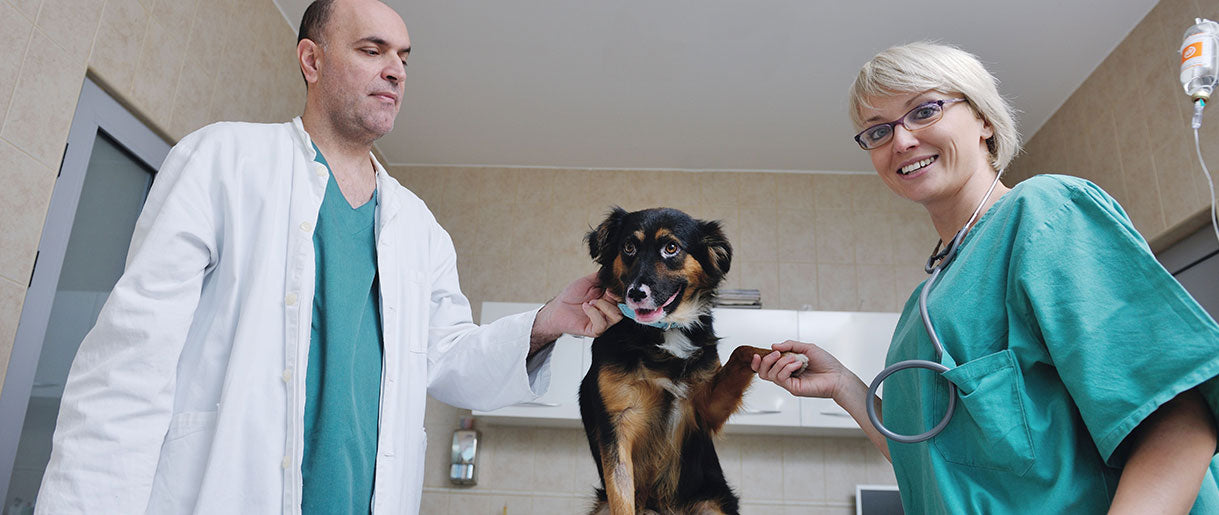Understanding the Holistic Philosophy in Pet Care

Holism, at its heart, is about seeing the whole picture. In pet care, this means acknowledging that every aspect of an animal’s life impacts its health. A conventional veterinary approach might focus on diagnosing and treating a specific disease. In contrast, a holistic approach seeks to identify the root causes of imbalances, considering lifestyle, diet, stress levels, environment, and even emotional state, all working in harmony to promote optimal health.
The rise of holistic pet wellness is driven by several key factors:
A. Humanization of Pets: Owners are more invested in their pets’ long-term health and happiness, seeking sophisticated care.
B. Desire for Natural Solutions: A growing preference for natural, less invasive treatments and preventative measures.
C. Increased Awareness of Conventional Medicine Limitations: Recognition that while conventional medicine is crucial, it may not always address chronic conditions effectively or prevent recurrence.
D. Focus on Prevention: A proactive stance on health, aiming to prevent illness before it starts, rather than reacting to it.
E. Accessibility of Information: Easier access to information about alternative therapies and natural pet care through the internet and specialized practitioners.
This philosophy emphasizes a partnership between the pet owner, the veterinarian, and other wellness practitioners, all working together to create a customized wellness plan for each unique animal.
Key Pillars of Holistic Pet Wellness
A truly holistic approach integrates multiple modalities to support a pet’s overall health. These pillars often complement conventional veterinary care, rather than replacing it.
A. Optimal Nutrition and Diet
Diet is arguably the cornerstone of holistic health. What a pet eats directly impacts their energy levels, immune system, coat quality, and disease susceptibility.
- Species-Appropriate Diets: This emphasizes feeding pets diets that closely mimic what they would naturally eat in the wild. For dogs, this often means high-quality protein, moderate fat, and limited carbohydrates. For cats, strict carnivores, this means diets rich in animal protein.
- Whole, Unprocessed Foods: Prioritizing fresh, minimally processed ingredients over heavily processed kibble with fillers, artificial preservatives, colors, and flavors. This might include:
- Raw or Freshly Cooked Diets: Prepared at home or commercially available, these diets offer nutrient-dense, easily digestible options.
- Limited Ingredient Diets: Beneficial for pets with sensitivities or allergies, reducing exposure to potential irritants.
- High-Quality Protein Sources: Sourcing proteins from ethically raised, grass-fed, or pasture-raised animals, or considering novel proteins like insects or plant-based options if nutritionally balanced.
- Nutritional Supplements: Judicious use of supplements to fill nutritional gaps, address specific health concerns, or support overall vitality. Common supplements include:
- Omega-3 Fatty Acids: For skin, coat, joint, and cognitive health.
- Probiotics and Prebiotics: To support gut health and digestion.
- Joint Supplements: Glucosamine, chondroitin, and MSM for mobility.
- Antioxidants: Vitamins C and E, coenzyme Q10 for cellular health and immune support.
B. Regular Exercise and Physical Activity
Physical activity is vital not only for maintaining a healthy weight but also for joint health, muscle strength, cardiovascular fitness, and mental well-being.
- Tailored Exercise Regimes: Customizing exercise to a pet’s age, breed, health condition, and energy levels. This could range from gentle walks for senior dogs to intense play sessions for high-energy breeds.
- Variety in Activities: Incorporating different types of exercise to engage various muscle groups and prevent boredom. This includes walks, runs, swimming, fetch, agility, and interactive play.
- Mental Stimulation through Exercise: Integrating activities that require problem-solving or training cues during exercise, engaging both body and mind.
C. Mental and Emotional Well-being
A pet’s emotional state profoundly impacts its physical health. Stress, anxiety, and boredom can manifest as physical ailments or behavioral issues.
- Enrichment Activities: Providing toys, puzzles, and opportunities for exploration to prevent boredom and stimulate cognitive function.
- Positive Reinforcement Training: Building a strong bond through reward-based training, fostering confidence and trust.
- Stress Reduction Techniques: Identifying and mitigating sources of stress in a pet’s environment. This might involve creating a calm retreat space, using calming diffusers, or employing gentle massage.
- Socialization: Appropriate socialization with other animals and people helps pets develop confidence and prevents fear or aggression.
- Addressing Behavioral Issues Holistically: Recognizing that behavioral problems often stem from underlying physical or emotional issues and addressing those roots.
D. Complementary and Alternative Therapies
Holistic wellness often incorporates therapies that complement conventional veterinary medicine, offering additional support for healing and well-being.
- Acupuncture: Used to alleviate pain, reduce inflammation, and improve organ function by stimulating specific points on the body.
- Chiropractic Care: Focuses on the health of the nervous system by ensuring proper alignment of the spine and other joints, often used for musculoskeletal issues.
- Herbal Medicine/Phytotherapy: Utilizing plant-based remedies to support various bodily systems, address inflammation, improve digestion, or manage anxiety.
- Homeopathy: A system of medicine based on the principle of “like cures like,” using highly diluted substances to stimulate the body’s self-healing mechanisms.
- Massage Therapy: Improves circulation, reduces muscle tension, aids in recovery from injury, and provides relaxation.
- Hydrotherapy: Using water for therapeutic purposes, particularly beneficial for rehabilitation, joint support, and low-impact exercise.
- Essential Oils/Aromatherapy (Used with Caution): Certain essential oils, properly diluted and diffused, can have calming or stimulating effects, but require expert guidance due to pet sensitivities.
- Nutraceuticals: Bioactive compounds derived from food sources that provide health benefits beyond basic nutrition (e.g., probiotics, prebiotics, certain vitamins/minerals in therapeutic doses).
E. Healthy Environment
A pet’s living environment significantly impacts its health and well-being.
- Safe and Clean Living Space: Ensuring a clean, hazard-free home environment, free from toxic chemicals, allergens, and excessive noise.
- Access to Fresh Air and Nature: Regular outdoor exposure, whether in a backyard or on walks, connects pets with natural rhythms and provides mental stimulation.
- Comfort and Security: Providing comfortable bedding, a secure personal space, and a sense of routine to reduce stress.
- Minimizing Toxin Exposure: Using pet-safe cleaning products, avoiding toxic plants, and being mindful of pesticides or chemicals in outdoor spaces.
Benefits of Adopting a Holistic Pet Wellness Approach

Embracing holistic pet wellness offers a multitude of advantages for pets and their owners.
A. Enhanced Overall Health and Vitality
By addressing the whole animal, holistic care promotes robust health from the inside out, leading to:
- Stronger Immune System: A well-nourished, balanced pet is better equipped to fight off illness.
- Increased Energy Levels: Optimal nutrition and activity contribute to sustained vitality.
- Shinier Coats and Healthier Skin: Reflects internal health and proper nutrient absorption.
B. Prevention and Early Detection of Issues
The proactive nature of holistic care focuses on maintaining balance, which helps prevent disease and identify subtle imbalances before they become serious problems.
- Reduced Risk of Chronic Diseases: Lifestyle and dietary interventions can mitigate risks for conditions like obesity, diabetes, and certain allergies.
- Earlier Intervention: Continuous observation and attention to subtle cues allow for earlier professional assessment when something seems off.
C. Improved Behavioral Well-being
Addressing underlying physical or emotional stressors often resolves behavioral challenges.
- Reduced Anxiety and Stress: Through environmental enrichment, proper training, and calming therapies.
- Better Temperament: A balanced and happy pet is generally more docile, cooperative, and engaged.
D. Better Management of Chronic Conditions
For pets with ongoing health issues, holistic therapies can significantly improve quality of life and potentially reduce reliance on pharmaceuticals.
- Pain Management: Acupuncture, chiropractic, and herbal remedies can effectively manage chronic pain.
- Improved Mobility: Therapies like hydrotherapy and massage can enhance flexibility and reduce stiffness.
E. Deeper Bond Between Pet and Owner
Being actively involved in all aspects of a pet’s wellness journey fosters a stronger connection and understanding.
- Mindful Interaction: Paying closer attention to a pet’s cues and needs.
- Shared Activities: Engaging in exercise, training, and enrichment activities together.
F. Potentially Reduced Long-Term Veterinary Costs
While some holistic treatments might have upfront costs, preventing serious illness and managing chronic conditions proactively can lead to fewer emergency visits and long-term medication expenses.
A Practical Guide for Pet Owners
Embarking on a holistic wellness journey for your pet is a gradual process that involves research, open communication with professionals, and a willingness to learn.
A. Find a Holistic or Integrative Veterinarian
This is arguably the most crucial step. Seek a veterinarian who is open to or trained in holistic modalities and can guide you in integrating conventional and alternative therapies safely and effectively. They can help you:
- Assess Your Pet’s Current Health: Get a baseline understanding.
- Recommend Appropriate Dietary Changes: Based on your pet’s specific needs.
- Suggest Suitable Supplements: To complement their diet.
- Advise on Complementary Therapies: And refer you to qualified practitioners.
B. Evaluate Your Pet’s Current Diet
Carefully read pet food labels. Look for whole, identifiable ingredients. Consider transitioning to a higher-quality, less processed diet. This might mean:
- Switching to a Premium Kibble: With clearly defined meat as the first ingredient.
- Exploring Freeze-Dried or Air-Dried Options: Which are less processed.
- Consulting a Veterinary Nutritionist: For a balanced homemade raw or cooked diet.
C. Optimize Exercise and Mental Stimulation
Assess your pet’s current activity level and identify areas for improvement.
- Establish a Consistent Exercise Routine: Tailored to their needs.
- Incorporate Play and Training: To challenge their minds.
- Rotate Toys and Puzzles: To keep them engaged.
D. Create a Calming and Stimulating Home Environment
Look at your home through your pet’s eyes.
- Eliminate Environmental Toxins: Use pet-safe cleaners, avoid toxic plants.
- Provide a Safe Retreat: A quiet, comfortable space where they can relax.
- Ensure Opportunities for Exploration: Within and outside the home.
E. Explore Complementary Therapies (with Professional Guidance)
If your pet has specific health concerns or you’re looking for additional support, discuss alternative therapies with your integrative vet.
- Start Gradually: Introduce new therapies one at a time to observe your pet’s response.
- Monitor Your Pet’s Reaction: Pay close attention to any changes in behavior or symptoms.
F. Practice Mindful Observation
Be an active participant in your pet’s health.
- Daily Check-ins: Observe their eating habits, energy levels, eliminations, and mood.
- Document Changes: Keep a journal of any new symptoms or improvements to share with your vet.
The Future of Holistic Pet Wellness
The trajectory of holistic pet wellness points towards greater integration, personalization, and scientific validation.
A. Mainstream Acceptance and Scientific Validation
As more research emerges supporting the efficacy of natural therapies, holistic approaches will become increasingly integrated into conventional veterinary medicine. Veterinary schools may offer more comprehensive courses in these modalities.
B. Technological Integration
Smart pet tech (wearables, smart feeders) will play an even greater role in providing data for holistic practitioners to create highly personalized wellness plans, monitoring responses to therapies, and identifying subtle changes in health patterns
C. Personalized Wellness Plans
Leveraging advancements in genetics and diagnostics, future holistic care will offer hyper-personalized nutrition, supplement protocols, and therapy recommendations tailored to an individual pet’s unique biological makeup and predispositions.
D. Focus on Environmental Health
The link between pet health and the broader environment will strengthen, with a greater emphasis on reducing pets’ environmental footprint through sustainable diets, eco-friendly products, and responsible waste management.
E. Increased Access to Integrative Care
Telemedicine and a growing number of integrative veterinary practices will make holistic care more accessible to pet owners in diverse locations.
Conclusion
The “Holistic Pet Wellness Gains” movement represents an exciting evolution in how we approach the care of our animal companions. It moves beyond merely patching up problems to proactively cultivating vibrant, long-lasting health by considering every dimension of a pet’s life. By embracing optimal nutrition, regular activity, mental enrichment, a safe environment, and thoughtfully integrating complementary therapies, pet owners can empower their animals to thrive.
This full-spectrum approach fosters not only healthier bodies but also happier, more balanced minds, ultimately deepening the extraordinary bond we share with our pets. As the understanding and availability of holistic options continue to expand, more and more pets will benefit from a comprehensive wellness strategy that truly treats them as whole, cherished beings.












